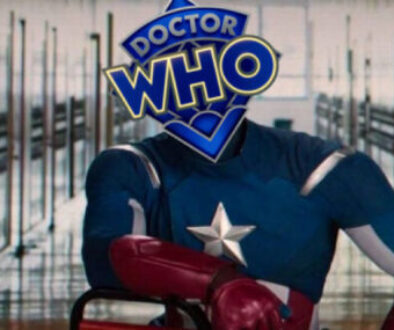Is Doctor Who About to Revisit “Midnight”? It’s a Tempting Idea, but a Risky One

Feature by Tom Leland.
With Doctor Who‘s new season now in full swing, rumours have been circulating that this Saturday’s episode, titled “The Well”, could serve as a sequel story to the much-loved 2008 story “Midnight“. As someone who considers “Midnight” not just a standout episode, but my favourite from Davies’ original era, the thought of returning to it fills me with both excitement and dread.
It is a masterpiece of tension and ambiguity, a story that lingers precisely because of what it withholds. So while nothing has been officially confirmed, and these concerns may prove unfounded, if “The Well” does revisit the events or creature from “Midnight”, it would be a bold move, and a risky one. Some stories thrive because they are left alone. A sequel could easily disrupt the delicate balance that made “Midnight” so effective.
The Power of the Unknown
A huge part of what makes “Midnight” so effective is its ambiguity. The creature that attacks the Doctor and the passengers of the tour bus is never seen, never explained, and never resolved. Viewers are left with a lingering sense of unease, precisely because nothing is tied up neatly.
Creating a sequel risks demystifying the entity. If Russell T Davies and newcomer Sharma Angel Walfall attempt to explain its origins, nature or motivations, they risk reducing it to something tangible and far less terrifying. Horror thrives on the unknown, and trying to pin down the “Midnight” creature could rob it of its chilling power.
Worse still would be the temptation to show the monster. Whether as CGI, prosthetics or a man in a suit, visualising it outright would undo everything that made it so effective in the first place. We only need to look at how Russell T Davies reintroduced Sutekh last year to see how this can go wrong. For my money, what was once a menacing and enigmatic figure was suddenly transformed into a giant CGI jackal. It may have looked “bigger”, but the menace that came from older limitations was lost.
Repetition Without Innovation
There is also a risk of repetition. A return to “Midnight” could easily fall into the trap of mimicking what worked before, but with diminishing returns. The original episode’s brilliance came from its simplicity and sustained tension. Trying to replicate that without it feeling like a retread would be extremely difficult.
Part of the tension came from seeing the Doctor completely powerless, stranded without the TARDIS or companions. Repeating this scenario could feel forced, and the uniqueness of the original’s structure might be diluted if the concept becomes a formula.
Born of limitation
It is worth remembering that “Midnight” was born of limitation. It was conceived as a bottle episode, written quickly to support the production schedule of a more ambitious story. The lack of visual effects, the single set, the absence of a companion, all of it was a product of necessity. Ironically, that restraint helped make the episode so powerful.
Now, with Doctor Who reportedly working with a budget of up to 10 million per episode, the temptation may be to throw everything at the screen. Bigger sets, bigger visuals, bigger monsters. But “Midnight” thrived because it could not be big. Without those constraints, a sequel risks losing the claustrophobia, simplicity and human tension that made the original so compelling.
The Tone is Not Easily Reproduced
The psychological horror in “Midnight” is tied intimately to its specific scenario, characters and performances, particularly David Tennant’s portrayal of a Doctor gradually losing control. Recreating that atmosphere would demand a precise balance of writing, acting and direction. If even one element is off, the whole thing could fall flat.
There is also the question of performance. When Tennant filmed “Midnight”, he was four series into his time as the Doctor. He knew the character inside out and could perform him almost instinctively. That depth of familiarity allowed for subtle, layered acting in an episode that demanded psychological nuance.
By contrast, Ncuti Gatwa still feels like he’s shaping his version of the Doctor. It is fair to ask whether it is wise to place such a potentially psychologically delicate episode right now. Also, and I know this might be unpopular, I’m not totally convinced Gatwa’s Doctor is ready for something as dark. Yet.
“Blink” Should Have Been the Warning
Some Doctor Who stories are so well crafted that they arguably should not be revisited. Take 2007’s “Blink”, for example. While the Weeping Angels quickly became iconic, many fans, myself included, feel that their subsequent appearances gradually diminished their impact. What began as a brilliantly original concept became over-explained and overused, turning the Angels from chilling enigmas into just another recurring monster.
There is a real danger of something similar happening with “Midnight”. It remains iconic partly because it stands alone. Revisiting it might not only tarnish its legacy but also suggest a lack of confidence in telling new stories. Not every mystery needs to be solved, and not every monster needs an origin.
Conclusion
“Midnight” feels like lightning in a bottle. To revisit it now, in an era where everything is bigger, louder and more expensive, risks smothering that fragile brilliance in spectacle. If “The Well” really is a sequel, then I hope it remembers that less is more. That the fear came not from what we saw, but from what we could not understand. I will be watching with curiosity, hope, and a very real fear, not of the creature itself, but of seeing something I love lose what made it special.








